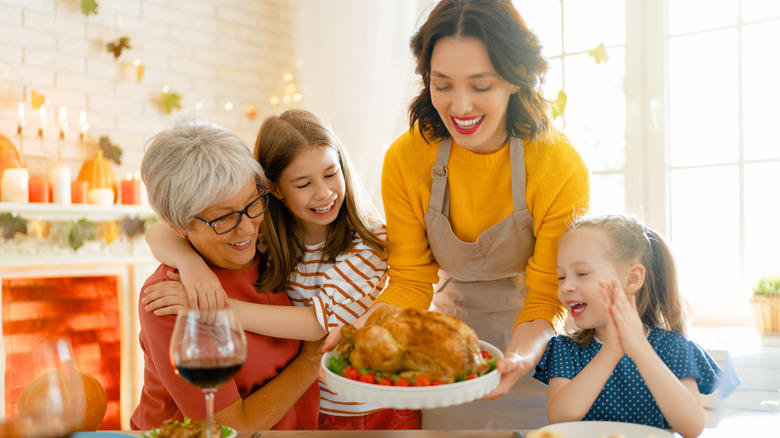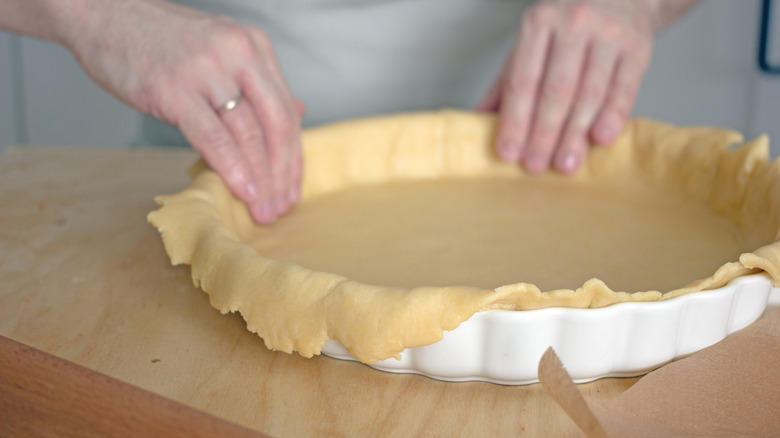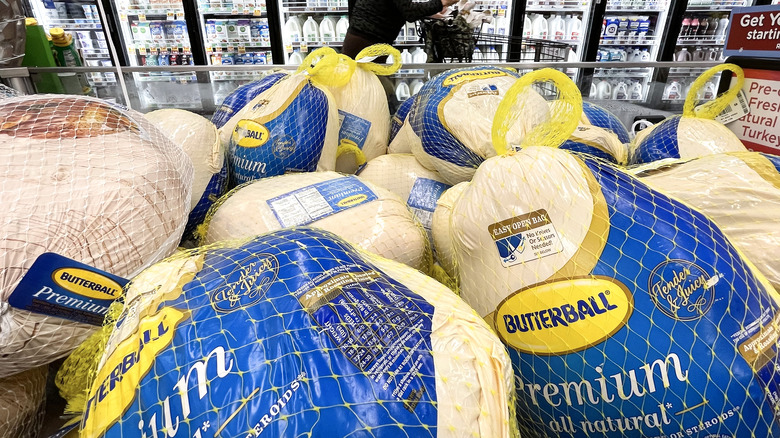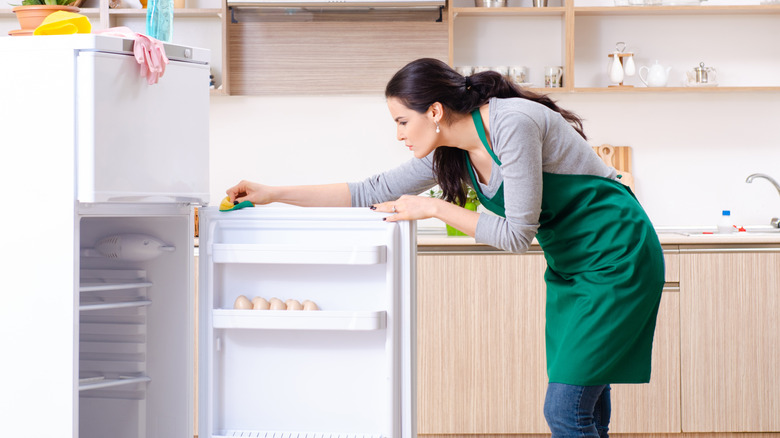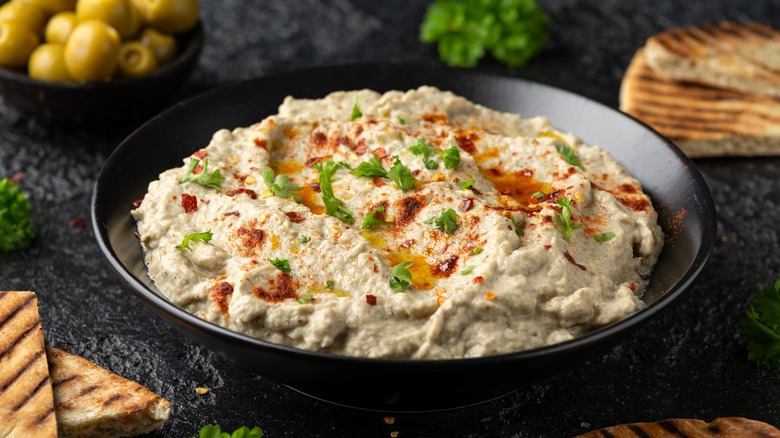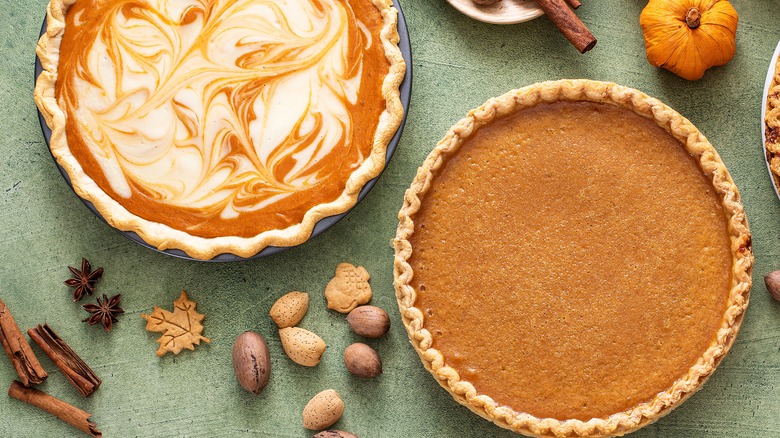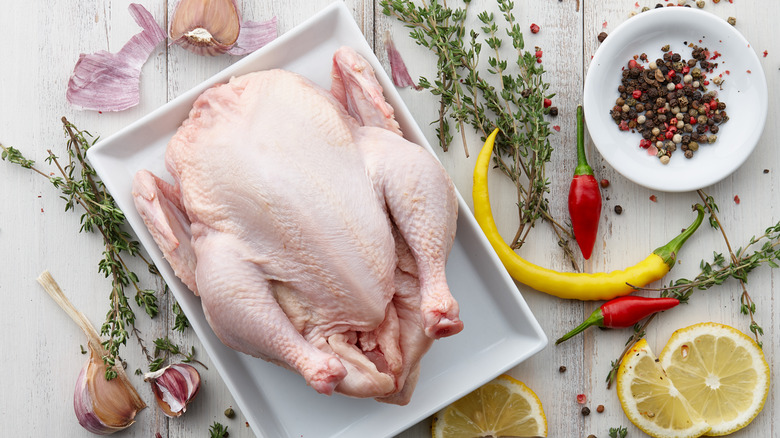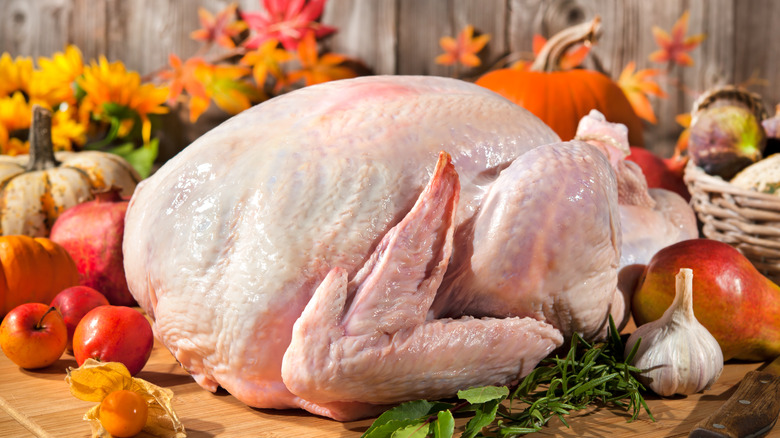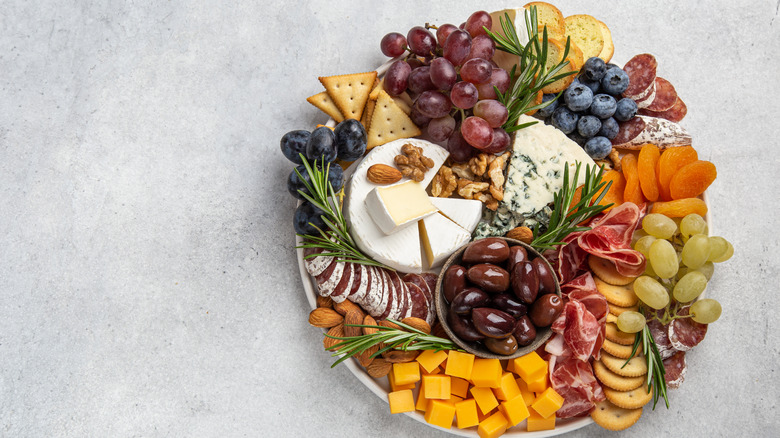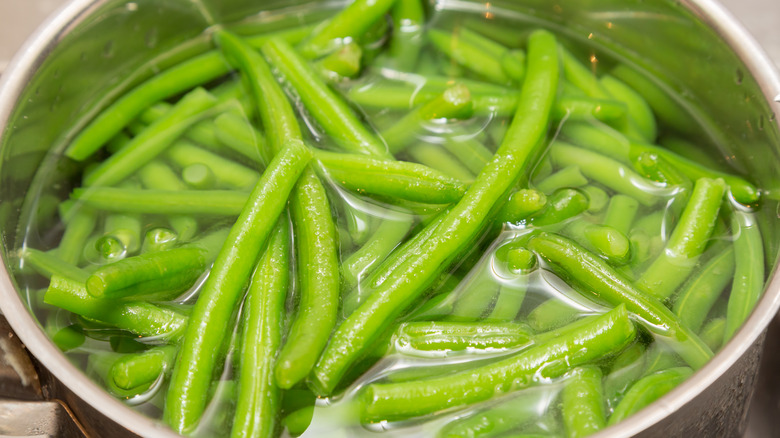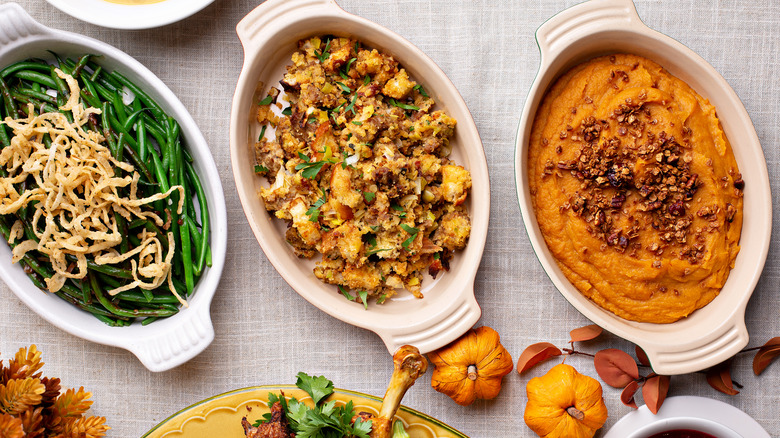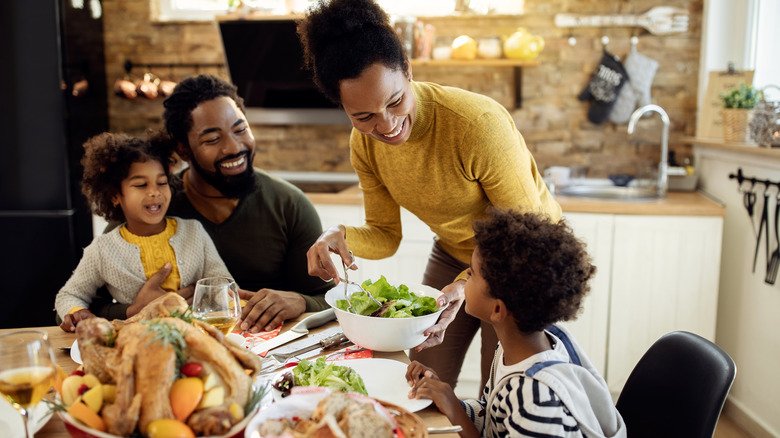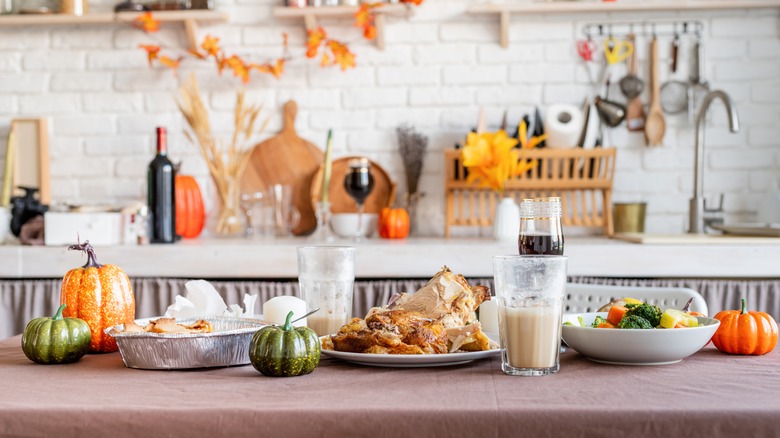The Ultimate Guide To Prepping For Thanksgiving
We may receive a commission on purchases made from links.
Following our ultimate guide to prepping for Thanksgiving is the first step towards ensuring you have a low-stress holiday. There's no need to wear yourself out the day before and the day of Thanksgiving when you can get started with preparations two to three weeks early. If you do everything in baby steps, the whole process won't seem nearly as overwhelming. You can start buying non-perishable groceries and supplies and even cooking two to three weeks before Thanksgiving. Make your pie crusts, rolls, and even some casseroles ahead of time so that you're not giving yourself and your kitchen a bigger workout than you need to on Thanksgiving day. If you do a little bit in the weeks and days before Thanksgiving, you will work smarter rather than harder.
Our guide not only includes information for getting your food ready but also information for preparing your home ahead of time. Whether Thanksgiving includes just your immediate family, a few extra dinner guests, or having people over to stay the night, we've got you covered. Your home will be clean and your food will be ready on time. And, with doing so much ahead of time, you might even get to sit down and rest before putting Thanksgiving dinner on the table.
Two to three weeks before Thanksgiving
Two to three weeks before Thanksgiving is the perfect time to get ahead of the game. Start making lists and spreadsheets to plan what you're doing and when. Once you contact everyone for RSVPs, you can start making a menu to take into account dietary needs and make a shopping list of food and other supplies. Go ahead and buy non-perishable goods like foil, cleaning supplies, and canned food now. Pumpkins, hard squashes, cabbage, onions, leeks, root veggies, lemons, cranberries, and apples are also fine to purchase this early (via Misfits Market).
If you plan to order a pre-cooked Thanksgiving dinner or need to pre-order a turkey, you should get started as soon as possible. With the rising cost of food, many people are opting to invite fewer people to Thanksgiving (via Finance Buzz). However, it's perfectly fine to ask guests to bring menu items when they RSVP. Even celebrity chefs like Bobby Flay and Giada de Laurentiis ask guests to bring dishes to lower the day's stress level and allow other people to make dishes that they're good at making.
Two to three weeks before Thanksgiving is a great time to start making and freezing Thanksgiving food items. This strategy saves both time and precious oven space on Thanksgiving morning. Freeze-ahead foods include bread, rolls, pie crusts, soups, and casseroles. In fact, freezing your pie dough ahead of time will give you even flakier crusts.
One week before Thanksgiving (Thursday and Friday)
A week before Thanksgiving, you'll want to remember to stop by the liquor store to choose the wines you want to serve for Thanksgiving. A week before Thanksgiving is also when you might want to think about buying any Thanksgiving- or fall-related decorations or centerpieces. And, if you have a tradition of going to the movies after Thanksgiving dinner, it's a good time to go ahead and buy movie tickets to get the best seats.
When prepping for Thanksgiving, the timing for buying your turkey is tricky. If you buy it frozen, it needs enough time to thaw before Thanksgiving morning. How long it takes to thaw depends on how big the bird is, so you'll need to calculate what size turkey you need to buy. You'll need about a pound to a pound and a half of turkey per person. The USDA says it takes one day of refrigerator defrosting time for every 4-5 pounds of turkey, so a 25-pound bird would take five days to thaw. It's safe to keep the turkey in the fridge for one or two days after it defrosts, so plan accordingly.
The weekend before Thanksgiving (Saturday and Sunday)
The weekend before Thanksgiving is the ideal time to make a shopping trip for produce like cauliflower, radishes, scallions, mushrooms, celery, peppers, lettuce, greens, sage, rosemary, beverages, and extra ice (via Misfits Market). You can go ahead and make your cranberry sauce the weekend before Thanksgiving. You can also take the opportunity this weekend to make and freeze bread, rolls, pie crust, soups, or casseroles you didn't do previously. If you prefer to make rather than buy extra ice, you can start the process this weekend as well.
While you're in the kitchen, pay attention to any deep-cleaning jobs you may want to get done ahead of guest arrival. Clean your oven and wash down cupboard doors and appliances, You'll also want to give your microwave a good cleaning inside to make sure there aren't any spatters to rain down on food when you reheat it on Thanksgiving day. The weekend before Thanksgiving is also the perfect time to clean out space in your fridge and freezer that you'll need later for Thanksgiving foods and leftovers. While you're deep cleaning your kitchen, don't forget to refill your soap dispensers so nobody runs out of hand or dish soap while cleaning up on Thanksgiving day.
Three days before Thanksgiving (Monday)
If you have a turkey that's fifteen pounds or smaller, you can start thawing it in the fridge on the Monday before Thanksgiving. Keep in mind that you need 24 hours of refrigerator thawing time for every 4-5 pounds (via USDA).
Even if you don't plan to have overnight guests, you can clear out closet space (or bed space) for your guests' winter coats in case it's cold on Thanksgiving. However, if you do have guests coming to stay overnight, you'll want to take the opportunity on Monday to get their rooms ready. Clear any clutter in the guest rooms. Don't forget to replace the sheets with fresh ones. Ensure that you also stock towels, washcloths, and toiletries for guests. You might also think about clearing out closet or drawer space for your guests to place their things. Once you've dusted and vacuumed, it's a good idea to close the guest room doors to keep the rooms fresh and clean throughout the week until the guests arrive, keeping out people and pets.
Two days before Thanksgiving (Tuesday)
Two days before Thanksgiving, on Tuesday, is when you should really start getting into gear for the Thanksgiving cooking tasks. While you could buy more delicate items during the weekend instead, you may want to wait until a couple of days before Thanksgiving to buy them. For example, now is the time to buy persimmons, figs, fresh green beans, asparagus, Brussels sprouts, or more delicate salad greens like endives (via Misfits Market).
You can also start making non-meat foods that will keep for a couple of days in the fridge. For example, you can start making creamy dips, relishes, and salad dressings. Tuesday is also a good time to make pie dough if you haven't already. If you're using tablecloths and cloth napkins, you may want to take them out now and either iron them or run them through the dryer to remove wrinkles. And if you plan to use real silverware, you'll want to get to work on removing tarnish.
Tuesday is the perfect time to take care of cleaning your bathrooms. Stock them with fresh toilet paper and soap. Don't forget to wipe down your mirrors and put out fresh hand towels. If you have houseguests planning to stay the night, you'll want to pay special attention to your tubs and showers.
One day before Thanksgiving (Wednesday)
On Wednesday, work smarter by assembling your stuffing or dressing, other casseroles, and many of your Thanksgiving sides to cook now or tomorrow. Southern Living says that you should put any frozen casseroles in the fridge to thaw overnight. And if you assemble and make your pumpkin pie or other custard-based pies today, they'll be perfect for tomorrow.
Go ahead and pre-cut your veggies, fruits, and citrus for cocktails. To prevent potatoes from going brown, store them in cold water in the fridge. You'll also want to place drinks in the fridge that you would like to chill if you have any room. If there's no room left in the fridge for chilling drinks, it may be better to get out an ice chest instead.
The day before Thanksgiving is also when you'll want to take care of last-minute clutter, dusting (don't forget fan blades and cobwebs), mopping, vacuuming, sweeping porches, sweeping sidewalks, and sweeping driveways. You'll also want to take out the garbage and recycling to make plenty of room for cleaning tomorrow's messes.
If you have any time left over, set up the table (or tables) for tomorrow. Put in extra leaves, get out any extra chairs, and set the table. According to Houzz, each guest at a rectangular or circular table needs 24 inches of space, while each guest at a small circular table needs 26 inches of space.
Thanksgiving morning (Thursday)
If you forgot to thaw out your bird previously, all is not lost; you just might need to eat later than planned. You can thaw it out in cold water at 30 minutes per pound, thaw it in the microwave at six minutes per pound, or cook it 50% longer (via USDA). If your turkey is thawed, you'll want to remove the giblets and get it ready to cook. Scientists say you should never wash your turkey because you run the risk of spreading dangerous bacteria around your kitchen (via USDA).
Cleaning as you go is the best way to keep your day as stress-free as possible. Using disposable items like disposable turkey roasting pans, turkey roasting bags, and foil under veggies while roasting can make cleanup that much easier.
With the bird in the oven, it's time to start prepping for Thanksgiving. If you haven't prepared your stuffing or dressing, you'll want to do it first thing in the morning. If you still have any pies left to bake, you should get started on them in the morning as well.
Four hours before Thanksgiving dinner
Depending on the turkey's size and cooking method, you may need to get started with cooking your turkey sooner or later than four hours before you plan to serve dinner. According to Butterball's cooking times, you can expect a thawed bird to take between two and five hours depending on how large it is. However, Butterball says smoking your turkey can take considerably longer (four to 20 hours depending on the turkey size and type of smoker).
The USDA advises avoiding cross-contamination with turkey juices, other foods, and the surfaces of your kitchen. Sanitize anything that touches the turkey, including your hands, to avoid foodborne illnesses. While estimated cooking times can be useful as a reference, it's essential to use a meat thermometer to make sure the turkey is done. Butterball says the internal temperature of the thigh should register 180 degrees Fahrenheit, while the breast or stuffing should measure 170 Fahrenheit.
Two hours before Thanksgiving dinner
Two hours before Thanksgiving is when you need to think about making easy appetizers if you haven't done so already. With so much food and so many calories waiting, there's no need to get too fancy. Fresh fruit and veggies are always easy. Or go with Julia Child's Thanksgiving appetizer and serve goldfish crackers (via Fast Company).
Martha Stewart's three-ingredient cocktail is also an easy choice for drinks. Her brown-sugar-rimmed Apple Cider Whiskey Sour has both a cocktail and mocktail version to accommodate everyone. Both versions contain apple cider and lemon. The cocktail version requires bourbon, while the mocktail version calls for orange juice.
With two hours to go until dinner, it's time to make any salads and do any last-minute casserole preparation. If you're planning to have mashed potatoes, it's a good time to peel the potatoes and store them in the fridge in water for boiling at the last minute.
One hour before Thanksgiving dinner
One hour before Thanksgiving dinner is your chance to take care of anything you haven't gotten around to doing yet before everything starts getting hectic. You can set out appetizers and finish setting the table if it's not done yet. If you have sugar and creamer sets, you'll want to get them out and fill them for coffee later.
However, an hour before dinner is also when you may have to start shifting into high gear. You'll want to have a very strict timing schedule in mind for when everything needs to start going into the oven and onto the stovetop. Some of your casseroles may need to go in now. And you may need to start putting together some of your Thanksgiving side dishes. For example, you can go ahead and put your potatoes and green beans in pans ready to boil when the time is right. You can also put any roasting vegetables in pans and throw them into the oven.
Thirty minutes before Thanksgiving dinner
Thirty minutes before Thanksgiving dinner is when the pedal hits the metal. You'll want to finish cooking last-minute side dishes, roasted vegetables, mashed potatoes, and casseroles. It's also time to warm up some of the food you made earlier.
The microwave is fine for warming up some foods. However, many dishes will taste better warmed in the oven. According to Southern Living, you can reheat any pre-cooked casserole in the oven at 350 Fahrenheit until it's cooked through. You'll want to cover the casserole with foil, and some may require a splash of liquid to keep them moist. The USDA suggests reheating food until the internal temperature is 165 degrees to make sure it's safe to eat since that temperature will kill most common food pathogens.
Don't forget that the turkey will need to sit for about 15 minutes before carving (via Butterball). The very last things to warm up or make will usually be dinner rolls and gravy. Once everything is ready, it's time to put the gravy in the gravy boat and everything into serving dishes in final preparation for dinner.
Serving Thanksgiving dinner
After your turkey has sat for 15 minutes, it's time to carve it. After all that work, you'll want to carve the turkey the right way to ensure it looks its best. According to The Art of Manliness, you should start carving with the legs pointing away from you and the breast situated upward. Start by slicing downward to remove the thighs before removing the attached legs. You'll remove the legs by slicing through the connective joint. Then, you'll rotate the wings outward so you can cut them cleanly away from the body. If your turkey is stuffed, you can serve it more easily if you cut an oval at the neck and then scoop it out. Cutting the breast starts by following the breastbone with your knife to separate the meat and then slicing it against the grain on each side.
Other things to do during the Thanksgiving dinner serving process include setting out water, opening the wine, and setting salt and pepper out on the table. The last thing to do before sitting down to eat is to place pre-baked pies into the oven to warm them during the meal.
After Thanksgiving dinner
Not everyone will want dessert right away, but you can set all the Thanksgiving desserts out for people to eat when they're ready. In the meantime, you'll also want to prepare any after-dinner drinks. Many people will want coffee with their dessert, so get a fresh pot brewing or point people toward your Keurig choices. Set out milk, cream, and sugar as well. Some people may prefer tea instead, so set out some hot water to boil and provide tea bags, or make a whole pot of hot tea.
If you want to have a more low-stress Thanksgiving, it helps to assign cleaning tasks to your guests. In fact, to make expectations clear, you can assign cleaning tasks along with RSVPs when prepping for Thanksgiving. Cleaning tasks to do or assign include clearing the table, washing dishes, drying dishes, putting away dishes, wiping down tables and counters, and taking out the trash.
Leftovers are also a big part of your after-Thanksgiving-dinner considerations. According to the USDA, food is only safe for two hours if it's sitting out between 40 and 140 degrees Fahrenheit. So, it's important to refrigerate your leftovers as soon as possible. You can always send some home with guests, but there are plenty of recipes to make with your Thanksgiving leftovers as well.
